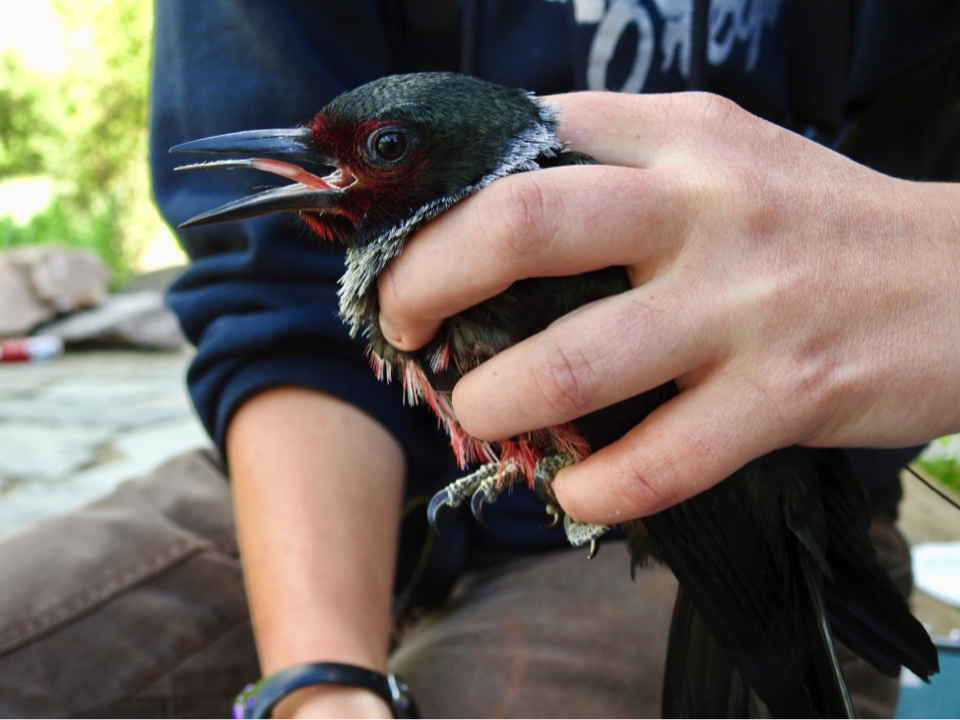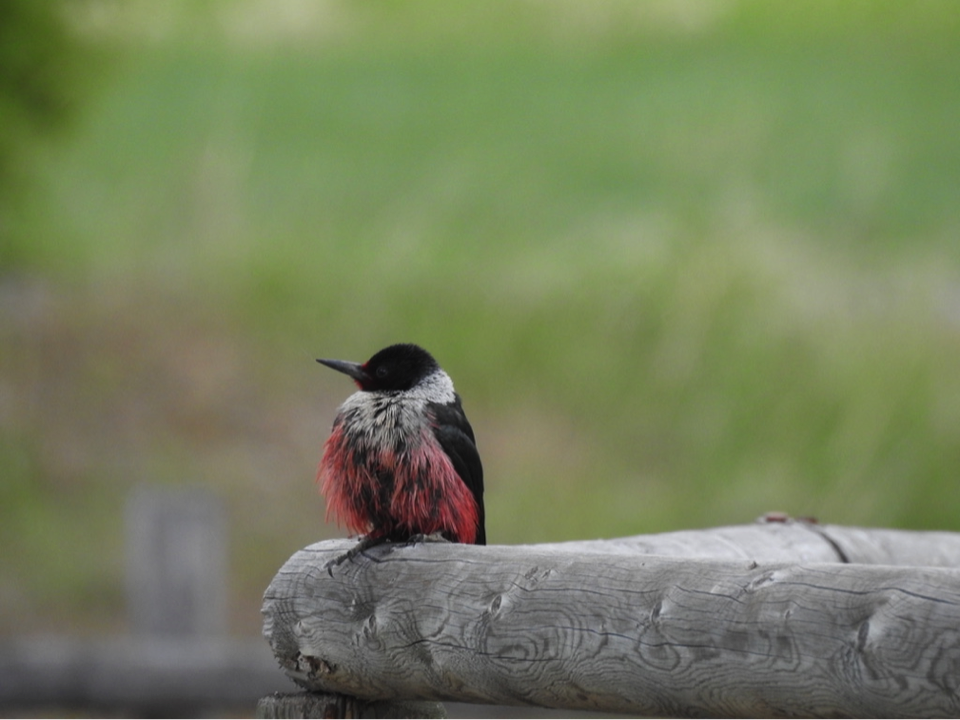
Migratory Lewis’s Woodpeckers Return
Block title
Avian Ecology
We seek to understand how birds use the habitats available and how that will change as we work to create more diverse plant communities. We also host researchers that document migrations of raptors and songbirds across MPG.
In this section of the research pages, you will find links to reports and updates from all the researchers involved with avian ecology, posted chronologically. The links will show you more in-depth reports on our findings. The three main projects covered here are:
Songbird Counts- A grid of sampling points covers MPG with 560 points. We visit each point 3 times a year, once in winter and twice during the songbird breeding season. We record, by ear or by sight, all the birds near that point for 10 minutes.
Songbird Banding- The University of Montana Bird Ecology Lab, UMBEL, runs several trapping stations at MPG as part of their regional songbird monitoring program. UMBEL sets up very fine nets that are nearly invisible to birds in brushy habitats. Songbirds fly into the nets and become entangled. The researchers take the birds from the nets and affix a numbered band to their leg before releasing them.
Raptor Research- The Raptor View Research Institute monitors raptor populations on MPG and counts raptors that migrate past MPG in the spring and fall. Raptor View researchers have placed transmitters on osprey and golden eagles that use the Bitterroot Valley.
During fall migration, our Motus network detected seven Lewis's Woodpeckers from 08/01/19-09/10/19, when adults departed from their breeding grounds. Lee Metcalf National Wildlife Refuge detected two, and Teller Refuge detected the same seven birds.
On the map above, blue circles show the locations of Motus stations during fall 2019. Yellow arrows show the direction that Lewis’s Woodpeckers moved over that time.
During spring migration, our Motus network detected four Lewis's Woodpeckers returning to the Bitterroot Valley. One of these birds was not detected on its fall flight last year. Motus tags can be missed when birds fly low among thick vegetation or behind hillsides that block the tag signals from reaching Motus receivers.
Since the Motus network can fail to detect birds, we supplement our monitoring with hand-held telemetry and visual observation. If a bird’s Motus tag isn’t working, we can discern the individual by the multicolor pattern of its leg bands. We encountered this situation recently, when observing a tagged and color-banded Lewis’s Woodpecker near a nest. Last week, the bird’s Motus tag stopped transmitting.
In early May, Lewis's Woodpeckers started to lay and incubate eggs. During incubation, adults become silent and spend many hours guarding the entrance of their nest. This allows us to observe and identify them in the field. The combination of color-bands, hand-held telemetry, and automatic Motus receivers will enable us to calculate detection rates. We need to understand detection rates to estimate the percentage of adults that come back each year.
Despite low return rates of tagged birds this spring, many un-banded Lewis’s Woodpeckers have arrived, cruising the Bitterroot Valley forest and tending numerous nests. The ratio of un-banded adults to tagged, returning birds may indicate that many adults do not return after winter.
This year we have already deployed sixteen tags on Lewis's woodpeckers. We will continue to tag adults as we expand the Motus network southward, exploring the migration routes and wintering grounds of Lewis’s Woodpeckers. We hope that our research will help to protect this species in decline.
If you live in the Bitterroot Valley and are interested in joining our Lewis's Woodpecker suet feeder project, check out the recent article in the Ravalli Republic (https://ravallirepublic.com/news/local/article_101c5dfc-d08b-584e-add6-5e9edd76a36c.html), and please contact Mary: [email protected].
Acknowledgements
We want to thank all the landowners who have granted us access to their homes, yards, and bird feeders.























